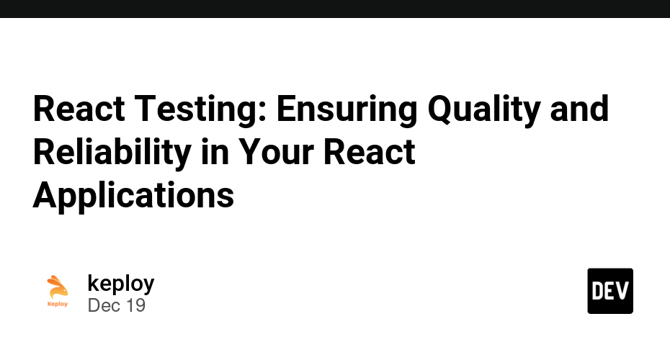Dev
3w
290

Image Credit: Dev
React Testing: Ensuring Quality and Reliability in Your React Applications
- React testing is vital while building complex React applications which ensure a component’s correct behavior under different conditions by writing unit, integration, and end-to-end tests.
- There are three main types of testing in React, namely Unit Testing, Integration Testing, and End-to-End Testing.
- When testing React components, there are several tools such as Jest, React Testing Library, and Enzyme which can be used, each suited to different types of testing.
- Unit tests are the foundation of React testing that focuses on testing individual components in isolation to verify that each component behaves as expected.
- React Testing Library is built to encourage tests that focus on how the component behaves from the user's perspective. It helps test components by rendering them in the DOM and interacting with them as a user would.
- Snapshot testing is a unique feature of Jest that allows the developer to capture the rendered output of a component and compares it to a previously saved snapshot to ensure that the UI doesn’t change unexpectedly.
- To handle the asynchronous behavior of React applications, React Testing Library, and Jest provide utilities like waitFor and findBy to wait for the completion of async tasks.
- Mocking allows you to replace parts of your component with mock implementations, making it easier to isolate components from external dependencies.
- Test coverage is a metric that indicates the percentage of your codebase tested by your tests.
- Testing not only improves code quality but also gives you confidence when deploying updates to production.
Read Full Article
17 Likes
For uninterrupted reading, download the app